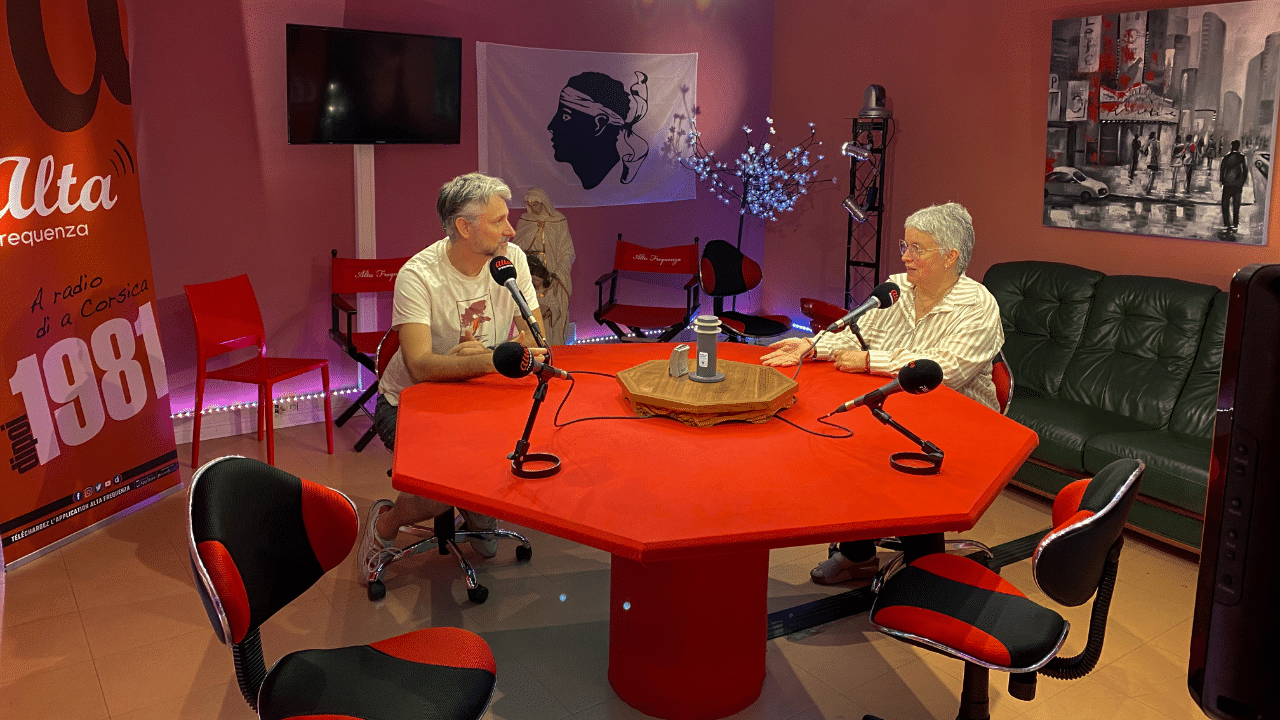AJACCIO, Corsica — Since 1981, Alta Frequenza has been stirring the soul of Corsica in every corner of the Isle of Beauty and beyond. It is authorized to broadcast to three regions in the south of France. An emblematic radio station, Alta Frequenza makes its territorial roots a strength in the service of Corsicans and lovers of the island.
Alta Frequenza is the doyenne of Corsican radio. At over 40 years old, it is the island’s oldest station.
Founded in 1981 in Ajaccio, on the island’s west coast, it was created to give a voice to those without in the 1980s.
“It’s a radio station that was born with the Riacquistu (cultural reappropriation) — at the same time as the Assembly of Corsica and the University of Corsica,” explains France Antona, the station’s director for the past 30 years. At the time, it was the only Corsican medium to broadcast songs in the Corsican language.
“Alta Frequenza was the first bilingual radio station in Corsica at a time when people were trying to silence the Corsican language,” continues Antona. “It was then that numerous Corsican cultural groups emerged, and the radio station has supported them ever since its creation.”
Sixty percent of Alta Frequenza’s broadcasts are in Corsican, and its Alta Canzona Corsa web radio is entirely in Corsican. The station’s website is fully bilingual, as are its staff.
In 1984, the young station decided to commercialize, helping it to take off. Today, this Category B radio station employs eight salaried staff and numerous volunteers throughout Corsica, the southern region of France and Paris.
In the course of its history, Alta Frequenza has trained many young Corsicans, who today work on ViaStella (France 3) and RCFM (France Bleu).
A multichannel strategy
With nine FM frequencies and four DAB+ frequencies in France reaching Marseille, Toulon, Nice and Cannes, Alta Frequenza stretches far beyond the island’s borders.
The station gives pride of place to Corsican news with five bulletins and four news flashes a day.
Although the station is fully computerized, live broadcasting remains a priority,” emphasizes Antona. “The team is out in the field every day, working alongside economic, political, cultural and sporting players to provide enlightened, no-holds-barred information.” Its online offering has been in operation for many years. The station’s mobile phone app also plays a crucial role in its wide reach. These digital tools enable Alta Frequenza to reach a younger generation, as does its presence on Facebook, X, Instagram and YouTube. Alta Frequenza is also equipped to offer Web TV. This multiple-channel strategy is designed to encourage listeners “to take Corsica with you wherever you go.” Antona explains the station’s offering: “Here, you don’t count the hours — the passion for the land, the culture, the people and the place does it all.”
“The landscape being what it is, broadcasting remains complicated, but we do it appropriately. It’s a question of almost daily monitoring and maintenance,” she stresses.
France Antona, Alta Frequenza director
Sixty percent of Alta Frequenza’s broadcasts are in Corsican, and its Alta Canzona Corsa web radio is entirely in Corsican. The station’s website is fully bilingual, as are its staff.
Proficiency in the Corsican language is not, however, a prerequisite for recruitment — skills and passion come first — but it is an asset.
According to Antona, the radio station’s philosophy is “to continue to defend what we have always defended: ‘Un populu, una lingua, una terra’ — as much as our openness to the Mediterranean. Our DAB+ broadcasts on the Côte d’Azur prove this and constitute a real media bridge and link with Corsicans and Corsican lovers on both sides of the sea.”
Given the station’s reach, it’s interesting that its biggest broadcast challenges are closer to home — the island’s topography.
“The landscape being what it is, broadcasting remains complicated, but we do it appropriately. It’s a question of almost daily monitoring and maintenance,” she stresses.
Frequency interference is another concern. The potential disruption is significant given Corsica’s proximity to Sardinia and Italy’s intense use of FM.
During a visit to Corsica in June last year, the president of French broadcast regulator, Arcom explained that, despite the absence of European regulations on transmitter power, Italy had signed an international agreement to coordinate frequencies, but the country’s parliament had not yet ratified it. The matter is, therefore, still on the table.
Another challenge for Antona and her team is the arrival of DAB+ in Corsica. Arcom plans to launch a call for DAB+ candidates this year. Antona smiles assuredly, “We’ll be ready.”
The author writes for RedTech’s sister publication, La Lettre Pro.
More stories on community radio
Brazil’s Grupo RIC stays close to the community

